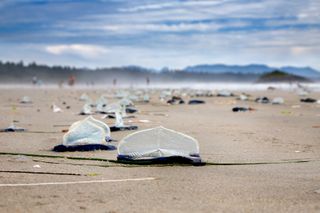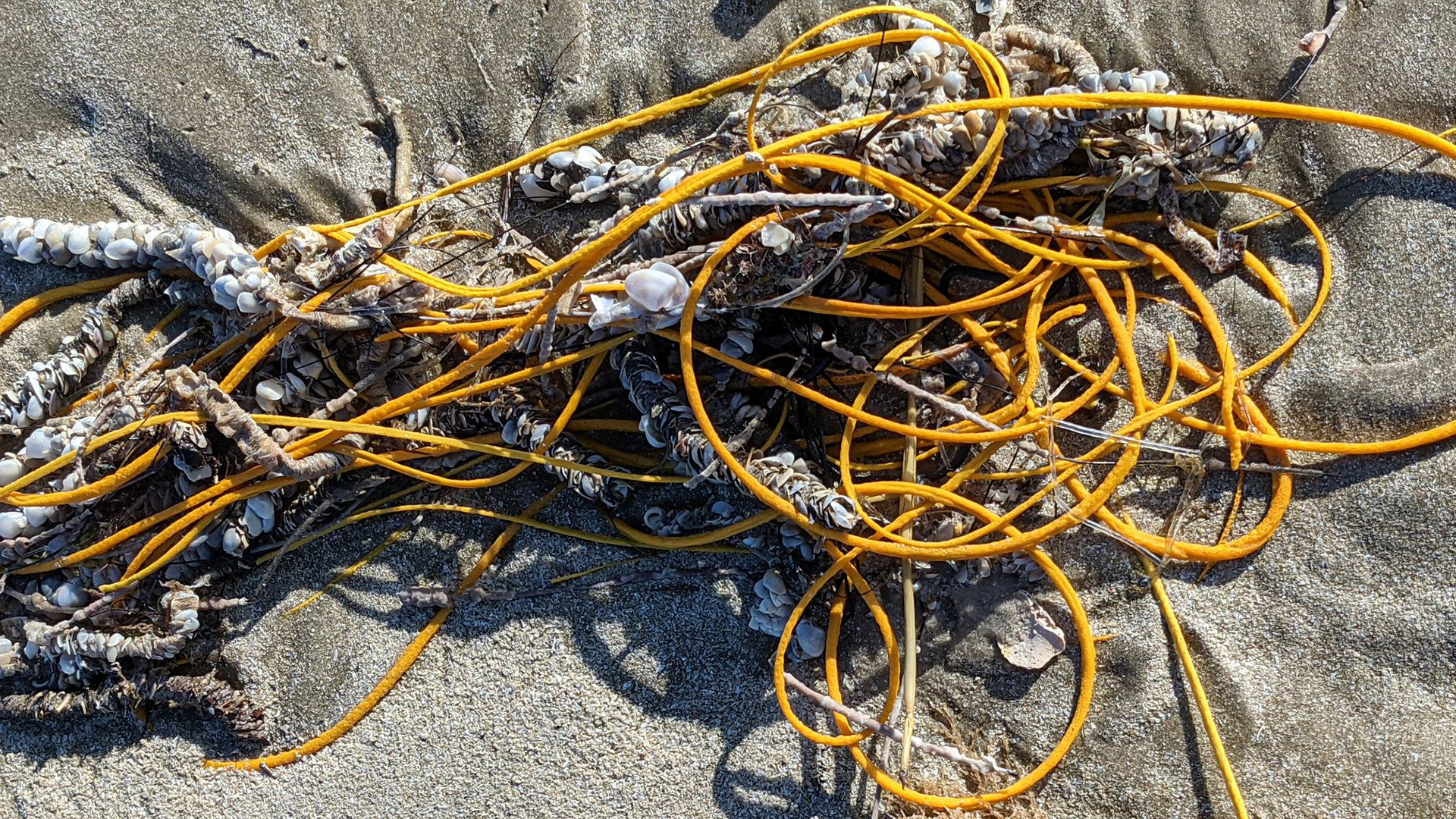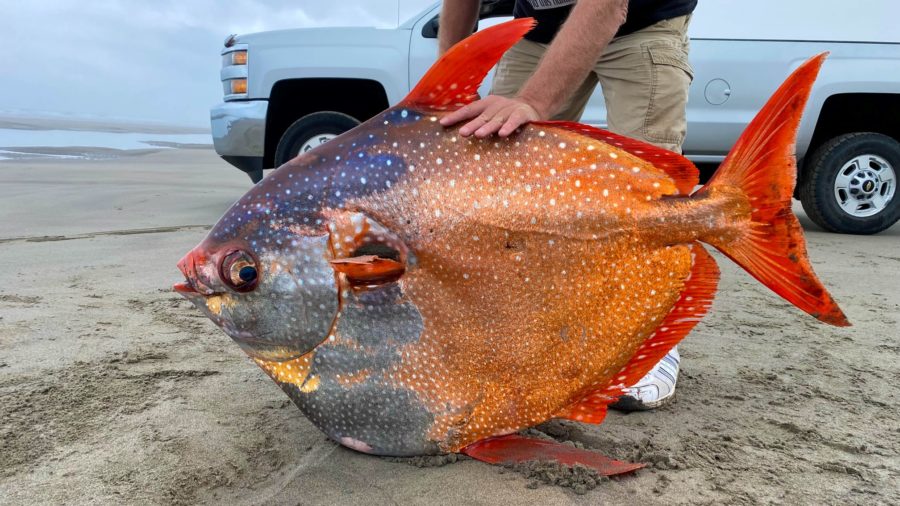11 strange things-
From tangled coral to Amazon river monsters, here are some of the strangest things that were carried to the shore this year.
The following written content via L.S.
Beaches across the globe saw their share of weird blobs wash ashore. Sometimes this shoreline debris was small and weird, like a tangled rope coral that found its way onto a beach in Texas, or the tar balls that dotted Israel’s Mediterranean coastline in February. Other times, the organisms numbered in the millions, such as the by-the-wind sailor jellyfish whose corpses stranded across shores; and in other instances, the beached animal itself was a behemoth, such as the rotting body of a nearly 10-foot-long (3 meters) “river monster” spotted near the Gulf of Mexico this year. Here’s a look at the wild and strange “things” that washed ashore in 2021.
Millions of ‘sailor’ jellyfish

Every year, millions of by-the-wind sailor jellyfish (Velella velella) wash up and die on beaches around the world. These jellies float near the top of the ocean, and have a little sail on their backs that catches wind and pushes them from one feeding ground to the next. When wind patterns change with the seasons, huge colonies of the jellies can end up stranded on the shore. Sometimes, those colonies include thousands of individual jellies; other times, they include millions.
Why are some Velella stranding events so much more massive than others? A study published in March 2021 found that the biggest stranding events occurred in years with record high ocean surface temperatures, driven by a phenomenon known as “the blob.” The blob warms surface waters in the Pacific Ocean, fostering larger colonies of Velella at sea; when the winds change, those massive colonies end up on shore, littering beaches with millions of jelly carcasses. This trend of mass die-offs will likely continue as global warming escalates over the coming decades.
A truck-size basking shark

A male basking shark measuring 26 feet (8 meters) long washed up on the coast of Bremen, Maine in January, stunning local fishermen with its pickup-truck-sized body. Basking sharks live in warm waters across the world, and are the second largest fish in the sea; Only the elusive whale shark, which measures up to 60 feet (18 m), is longer. Despite their formidable size, basking sharks are harmless to humans. They mainly prefer to cruise through the water with mouths open, filtering tasty zooplankton and tiny invertebrates through their complex gills. As for the Bremen shark’s cause of death? Marine researchers still aren’t sure.
Twisted ‘rope pile’ on a Texas beach

It might look like a tangled snarl of yellow rope, but this knotty pile that washed up on a beach in Texas is really a type of coral known as a colorful sea whip (Leptogorgia virgulata). Colonies of soft-bodied coral polyps lend sea whips their vibrant colors, in shades of yellow, red, orange, purple, lavender and violet. After a National Park Service (NPS) guide found the partly-buried “rope ball” at the Padre Island National Seashore near the Gulf of Mexico, she shared the image on Facebook. Several commenters remarked that they had seen colorful sea whips on the beach before, but had always assumed that the creatures were trash, such as discarded cord or part of a fishing net.
Toxic tar balls wash up on Israel’s coastline

In February, strange balls of tar began to wash up along Israel’s Mediterranean coastline. Over 100 miles (160 kilometers) were affected by the tar balls which were the result of an oil spill 31 miles (50 km) off the coast. Normally, oil spills form a slick across the sea’s surface and washes up on beaches in a more liquid form.
The Israel spill, however, turned into tar balls because rough sea conditions from a storm broke up the slick and mixed it into the seawater for several days creating small concentrated blobs of congealed oil. It was described by officials as “one of the most serious ecological disasters” the country had ever seen. Beaches also had to be closed to the public after several cleanup volunteers had to be taken to hospital after inhaling toxic fumes given off by the tar balls.
A fish inside a jellyfish

Dead jellyfish dotting the shoreline are typically nothing to stop and look at. But in August, a peculiar blob caused beachgoers in the U.K. to take notice. This cnidarian had an undigested fish in its translucent bell for all to see. The juvenile fish must have been consumed right before the hungry compass jellyfish (Chrysaora hysoscella) — named for its brown, V-shaped markings that are reminiscent of a compass — met its end as well.
The unfortunate fish could have been hiding out in the jelly’s tentacles, a known behavior, when its protector struck. The jellyfish likely stung the fish to death and would have continued to slowly digest the snack in its rudimentary stomach had it not washed ashore and met its doom, Live Science reported.
A local photographer who spotted the beached jelly while walking his dog near Padstow in Cornwall on Aug. 4, said “It’s not something you see every day,” according to The Daily Mail. Read more from Live Science.





